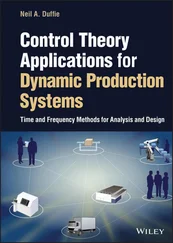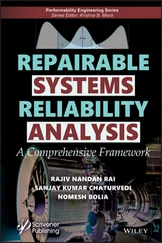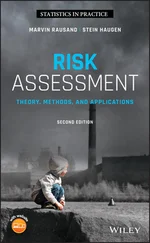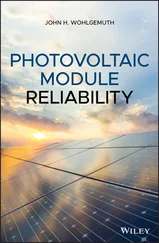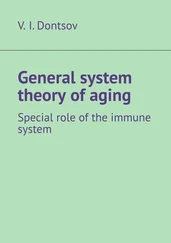1 ...7 8 9 11 12 13 ...30 
Figure 1.2Main drivers for high reliability.
If items have flaws that affect safety, safety regulations may require all the flawed items to be recalled for repair or modification. Such recalls are rather frequent in the car industry, but are also common in many other industries. In addition to excessive warranty costs and item recalls, flawed items lead to dissatisfied and nonreturning customers.
1.2.1 Related Applications
Reliability considerations and reliability studies are important inputs to a number of related applications. Several of these applications have adopted the basic terminology from reliability. Among the relevant applications are:
Risk analysis. The main steps of a quantitative risk analysis (QRA) are: (i) identification and description of potential initiating events that may lead to unwanted consequences, (ii) identification of the main causes of each initiating event and quantification of the frequency of the initiating events, and (iii) identification of the potential consequences of the initiating events and quantification of the probabilities of each consequence. The three steps are shown in the bow‐tie model in Figure 1.3, where the main methods are indicated. The methods that are covered in this book are marked with an .
Maintenance planning. Maintenance and reliability are closely interlinked. High‐quality maintenance improves the operational reliability and high reliability gives few failures and low maintenance cost. The close link is also visible in the popular approach reliability‐centered maintenance (RCM), which is discussed in Chapter 9.
Quality. Quality management is increasingly focused, stimulated by the ISO 9000 series of standards. The concepts of quality and reliability are closely connected. Reliability may in some respects be considered to be a quality characteristic.
Life cycle costing. The life cycle cost (LCC) may be split into three types: (i) capital expenditure (CAPEX), (ii) operational expenditure (OPEX), and (iii) risk expenditure (RISKEX). The main links to reliability are with types (ii) and (iii). The OPEX is influenced by how regular the function/service is and the cost of maintenance. The RISKEX covers the cost related to accidents, system failures, and insurance. LCC is also called total ownership cost.
Production assurance. Failures in a production system lead to downtime and reduced production. To assure a regular production, the production system must have a high reliability. Production assurance is treated in the international standard ISO 20815 and discussed in Chapter 6.
Warranty planning. A warranty is a formal commitment to deliver reliable items. If failures and malfunctions are detected during a specified warranty period, the supplier has to repair and/or compensate the failure. Unreliable items may incur a high cost for the supplier.
Systems engineering. Reliability is one of the most important quality attributes of many technical systems. Reliability assurance is therefore an important topic during the systems engineering process. This is especially the case within the nuclear power, the aviation, the aerospace, the car, and the process industries.
Environmental protection. Reliability studies are used to improve the design and operational availability of many types of environmental protection systems. Many industries have realized that a main part of the pollution from their plants is caused by production irregularities and that consequently the reliability of the plant is an important factor in order to reduce pollution. Environmental risk analyses are carried out according to the procedure shown in Figure 1.3.
Technology qualification. Many customers require the producer of technical items to verify that the item satisfies the agreed requirements. The verification is carried out by following a technology qualification program (TQP) based on analysis and testing. This is especially the case within the aerospace, defense, and petroleum industries (e.g. see DNV‐RP‐A203 2011).
Applications related to reliability are illustrated in Figure 1.4.

Figure 1.3Main steps of risk analysis, with main methods. The methods covered in this book are marked with  .
.

Figure 1.4Reliability as basis of other applications.
1.3 Basic Reliability Concepts
The main concept of this book is reliability as defined in Definition 1.1. The aim of this section is to discuss and clarify this definition and to define related terms, such as maintainability and maintenance, availability, quality, and dependability.
It is important that all main words are defined in an unambiguous way. We fully agree with Kaplan (1990) who states: “When the words are used sloppily, concepts become fuzzy, thinking is muddled, communication is ambiguous, and decisions and actions are suboptimal.”
Definition 1.1says that reliability expresses “the ability of an item to perform as required in a stated operating context and for a stated period of time.” We start by clarifying the main words in this definition.
1 Reliability is defined by using the word ability, which is not directly measurable. A quantitative evaluation of the item's ability to perform must therefore be based on one or more metrics, called reliability metrics. Several probabilistic reliability metrics are defined and discussed in Section 1.4.
2 Some authors use the word capability instead of ability in the definition of reliability and claim that the term “capability” is more embracing, covering both ability and capacity. Most dictionaries list ability and capability as synonyms. We prefer the word “ability” because this is the word most commonly used.
3 The statement perform as required means that the item must be able to perform one or more specified functions according to the performance criteria for these function(s). Functions and performance criteria are discussed in Section 2.5.
4 Many items can perform a high number of functions. To assess the reliability (e.g. of a car), we must specify the required function(s) that are considered.
5 To be reliable, the item must do more than meet an initial factory performance or quality specification – it must operate satisfactorily for a specified period of time in the actual operating context.
6 The stated period of time may be a delimited time period, such as a mission time, the time of ownership, and several more.
7 The time may be measured by many different time concepts, such as calendar time, time in operation, number of work cycles, and so on. For vehicles, the time is often measured as the number of kilometers driven. For items that are not operated continuously in the same mode, a more complicated time concept may be needed.
Inherent and Actual Reliability
It may be useful to qualify the reliability of an item by adding a word, such as inherent or actual. The inherent reliability is defined as follows:
Definition 1.3 (Inherent reliability)
Читать дальше
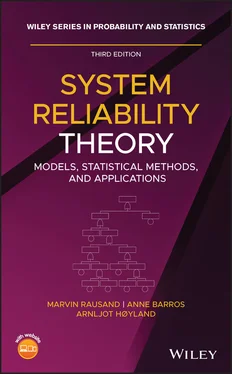


 .
.



